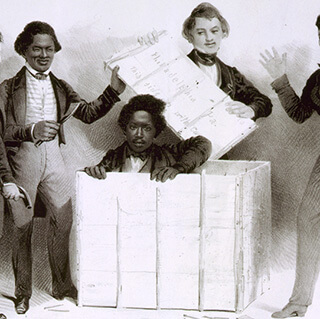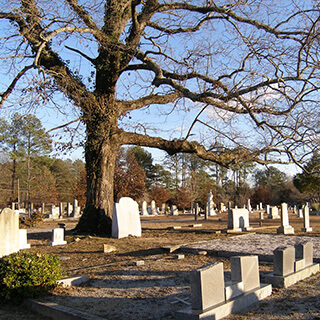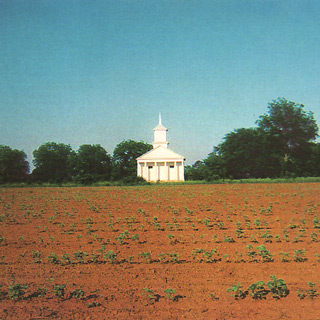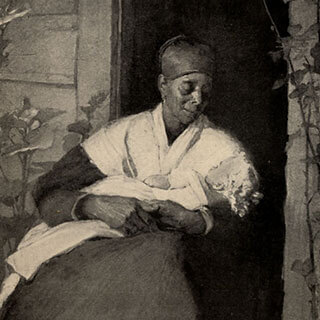Overview
James Oliver Horton explores how slavery is discussed at historical plantation sites.
Essay
At historical plantation sites, where the subject of slavery is difficult to avoid, Park Service interpreters struggle to present the subject in the least offensive manner. Interpreters at Arlington House, a National Park Service historic site and pre–Civil War home of the Custis-Lee family outside of Washington, DC, address the subject of slavery and Robert E. Lee as a slaveholder with extreme delicacy, if at all. White visitors often bristle at the mention of Lee as the owner of slaves and have difficulty accepting the fact that he and his compatriots took up arms against the United States in order to preserve a society based on slave labor and white supremacy. Stephanie Batiste-Bentham, an African American interpreter who worked for a number of months at Arlington House, explained that visitors sometimes took her aside to ask in hushed tones, "Were there really slaves here?" She also observed that some white interpreters at the site used the less emotionally charged term servants instead of slaves to describe the plantation laborers. In the last few years, historians at Arlington House have tried to include slavery in the plantation story and have opened the restored slave quarters at the rear of the main house. Batiste-Bentham found that visitor expectations made it easier to interpret slavery in the slave quarters than in the main house. Visitors were ready to ask questions and engage in discussion about slavery while in the slave quarters but expected the focus of the main house to be exclusively on the Custis-Lee family. When Batiste-Bentham suggested the extensive slave presence in Arlington House proper and slaves' role in its construction, for example, visitors were often surprised. She was careful to point out the kitchen and other workplaces in the house as almost exclusively slave work and social space. She explained the difficulty house slaves had navigating the steep, narrow, and dark back staircase carrying large trays or other awkward and heavy objects. Apparently visitors reacted positively to observations that suggested the reality of everyday slave life but were less willing to focus on the less pleasant aspects of slave/master relationships.
Most visitors thought of slavery and slaveholding in very simple terms. White visitors confronted with Robert E. Lee as a slave master were anxious that he be pictured as a "good master," although most had only the vaguest idea of what that might mean. On the other hand, black visitors anticipated being told about the atrocities of slavery and expected an African American interpreter to elaborate on them in the most horrendous detail. Both black visitors and white visitors seemed to expect an African American interpreter to deal with racial issues, including slavery, but were less likely to expect a white interpreter to do so. Regardless of their expectation, visitors generally were uncomfortable talking about slavery, especially in interracial groups. One memorable incident at Arlington House makes this point clearly. Batiste-Bentham was conducting a tour of the second floor of the house when from the floor below, ascending the back staircase, a black female visitor approached playfully chanting the refrain, "I's in the master's house, I's in the master's house." This visitor was not aware of the tour group and they could not see her, but her improvised refrain created a long, embarrassed silence, especially among the white visitors. Interestingly, Batiste-Bentham found that she had a somewhat easier time discussing slavery with white visitors than with black visitors, a fact she attributed to the pain that many black visitors report from talking about the subject.
◊ ◊ ◊
Given the importance and the difficulty of their task, and the still largely uncharted waters of such presentations, there is a pressing need for public historians and historical interpreters to engage in serious discussions about techniques and strategies for addressing race in general and slavery in particular. Academic scholars can be of great assistance in this critical venture, helping to develop the historical context for public presentation as a step toward a broad public discussion about slavery and race in American history and in contemporary America as well. By now most realize that this is not easy and, at the same time, that it is very important to do. There are a few tentative models but no proven strategy. Perhaps each setting will require its own special approach.
◊ ◊ ◊
If we are to have meaningful conversations on race in contemporary society, we must do so within the context of history. As we seek to confront our national history and its relevance to our present and future, the history of slavery matters a great deal. Difficult as it is, the discussion must start immediately, and historical scholars in the academy, in museums, and in historic parks and houses, wherever they do their work, are critical to the process. Theirs is the public historian's most difficult assignment. 
About the Author
James Oliver Horton is the Benjamin Banneker Professor Emeritus of American Studies and History at George Washington University and Historian Emeritus of the Smithsonian Institution's National Museum of American History. This essay is adapted from Horton's "Slavery in American History: An Uncomfortable National Dialogue," in James Oliver Horton & Lois E. Horton, Slavery and Public History: The Tough Stuff of American Memory. Paperback edition published by the University of North Carolina Press in 2009.




